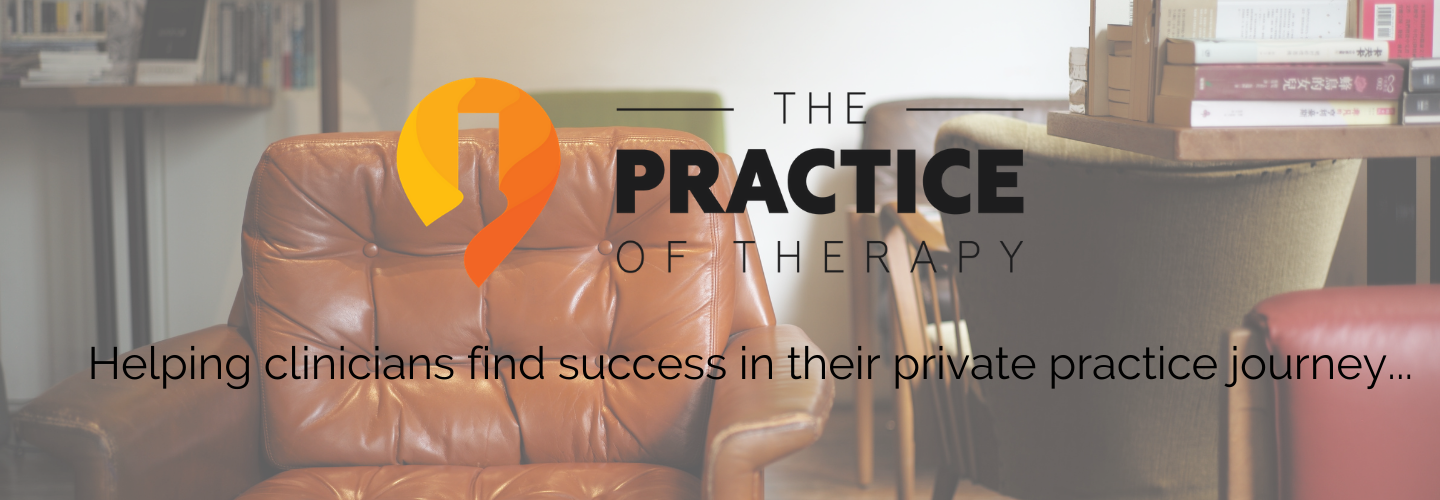To insurance or not to insurance? That is the question?
 In a previous post, I wrote about the advantages and disadvantages of taking insurance or third party payments for your counseling sessions in private practice; in other words, being on insurance panels vs. being strictly private pay.
In a previous post, I wrote about the advantages and disadvantages of taking insurance or third party payments for your counseling sessions in private practice; in other words, being on insurance panels vs. being strictly private pay.
By far, being strictly private pay and not filing insurance claims for clients is MUCH easier, hands down!
But what do you do if you are in an area of the country, due to socioeconomic factors, where NOT taking insurance causes you to loose potential clients? Or you are in an area where the majority of people seek out a therapist based on who is on their insurance panel?
You might just have to consider being on insurance panels to get the clients you need to stay in business.
So, how does a therapist go about taking insurance and getting on insurance panels? What I have outlined below are some of the basics for taking insurance and the steps you will need to task in order to get credentialed with insurance companies. It is A LOT of work! But once things are done, it goes pretty smoothly for the most part. And the advantage is that it will increase your referrals once you are in the system and on the insurance panels.
In Network vs. Out of Network
In order to be “In-Network” with insurance and EAP panels, you will have to be “Credentialed” with each individual insurance company. In most all cases, this requires being fully licensed and proof of insurance and whatever other documentation they might require. Being in-network just means you are guaranteed to be paid for patients you see that are part of that insurance plan at a contracted rate. Being in-network does mean more referrals and appointments; probably a 60-70% increase volume.
However, being out-of-network does not mean you are excluded from filing claims with insurance companies. If you are out-of-network, it just means you have no guarantee of being paid for those claims. The burden of paying for your services is differed back to the patient if the claim is rejected. But, the insurance company might pay you at an out-of-network rate or negotiate with you on a case by case basis for your services. So, either way your decision to accept insurance is up to you as the therapist.
In-network = guaranteed payment by insurance
Out-of-network = maybe paid
Out-of-network Options
Option 1– Have your all of your collections be all based on a sliding scale or set fee that is paid up front by the patient. You would give them a “Superbill” to turn into their insurance company for possible reimbursement; the burden of collecting from the insurance company is on the patient and not you. The advantage to you is you don’t have to deal with any insurance claims or insurance companies. On the downside is you might lose referrals from people that want use their insurance and you file the claims (the traditional medical/insurance model.) With this option there is no insurance “set-up” involved.
Option 2– Accept people’s insurance and you file the claim. You would just collect any co-pays or deductible amounts on the front end. When and if the claim is rejected, you would have to bill the patient and/or collect the balance on the account. The advantage to this option is that you can say you “accept insurance” and probably generate more referrals. The downside is it creates potentially more paperwork and having to manage collections and follow-up on what is owed if the insurance company rejects the claim. There is however some possibility that the insurance company would pay at out-of-network rates which are sometimes higher than the contract rates. “Set-up” for this option does require a good bit of leg work, but once set up works pretty seamlessly when using practice management software or company.
Insurance Credentialing
First step is to register with CAQH which is the main credentialing clearing house for most insurance and EAP companies. Once registered and all of your information is entered, you will need to upload or fax them your information. This process is all done online through the website: http://caqh.org. What you will need for this are copies of your license, liability insurance certificate, and curriculum vitae. Also any other certifications you might hold that allows you to practice in your state.
Second step is you want to register with the Medical Insurance Clearing House. I would recommend Office Ally. This is done through their website: http://officeally.com. This will then enable you to file claims electronically through Office Ally. Or check with your practice management software company to see which clearinghouse they might use or recommend if you are using a practice management software. With Office Ally, you can file claims electronically through their website and it is free for any insurance companies that are in their network. They do have a charge if they have send a paper claim but it is a minimal charge.
Third step would be to start contacting insurance companies to apply to be on their panels. Most all of this can be done online. I would do a little bit of research in your area to see which companies are used the most. For example, Blue Cross Blue Shield and Cigna are probably the two largest providers of health insurance in my area. I might be others for your geographic area. If there are any large employers, call their HR Department to see which company they use for their employees. So focus on the big ones first.
Another thing to do is contact Employee Assistance Program(EAP) companies. Two of the bigger ones are ComPsych and Ceridian. EAP are used by a lot of larger employers to provide counseling services for their employees. By being contracted with an EAP company, you get referrals and they pay you directly for those services at no cost to the client. The downside is that those rates tend to be fairly low ($50-60 per session).
If you decide to start taking insurance, I would highly recommend that you get some sort of practice management software connected to a clearinghouse. I use TherapyAppointment.com. There are others. Here is a link to a site that reviews all of them: http://www.capterra.com/mental-health-software/ Just make sure that whichever one you choose, that it has the ability to file claims electronically.
You also might want to look into contracting with a medical billing person that charges on an “as needed” basis. For example, my medical billing person works remotely and bills me $20 an hour and bills in 5 minute increments. It ends up being reasonably priced to have someone follow up with any rejected or slow claims.
Deciding to take insurance in your private practice as a counselor does require a lot of frontend and ongoing work. But what it does do is guarantee a generous flow of referrals. If the right steps are taken and systems are put in place, it can be worth the effort.
 By L. Gordon Brewer, Jr., MEd. LMFT – Gordon is the President and Founder of Kingsport Counseling Associates, PLLC. He is also a consultant and business mentor at The Practice of Therapy.
By L. Gordon Brewer, Jr., MEd. LMFT – Gordon is the President and Founder of Kingsport Counseling Associates, PLLC. He is also a consultant and business mentor at The Practice of Therapy.
